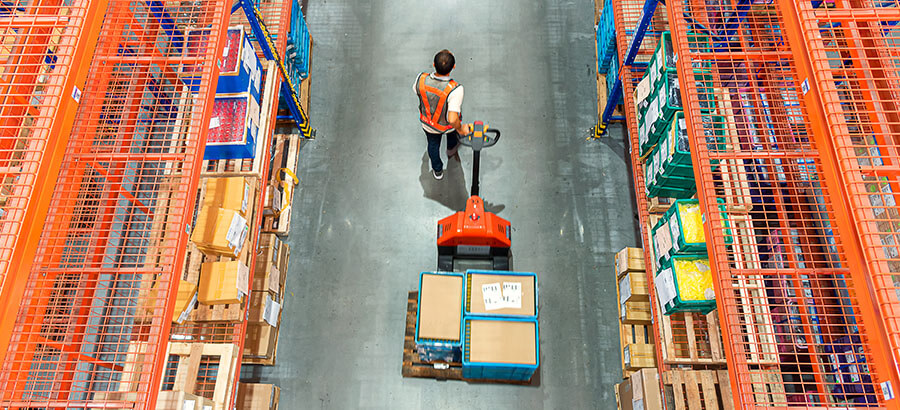Manufacturers and distributors across Asia have needed to remain resilient despite operating in intensely pressured times. The YOY in Q1 saw a 0.5% contraction – contributed by declines in the electronics and chemical industries despite expansions in biomedical manufacturing and precision engineering industries. The Singapore Purchasing Managers’ Index (PMI), an indicator that measures how much purchasing (or materials) local manufacturers are engaging in, saw a dip to 46.5 in March, the lowest since 2009. Below 50, PMI represents a contraction in the industry. It comes as no surprise that at the end of April, only 4% of manufacturers had positive business sentiments for the year ahead, according to a report by the Economics Development Board.
Despite the sudden dip, Singapore, Malaysia, Indonesia, Philippines, and Thailand are surprisingly heading for a sharp V-shaped rebound in 2021 of 7.8% combined. Taking the COVID-19 pandemic into consideration, the International Monetary Fund indicated in its April 2020 World Economic Outlook, that Singapore is slated to rebound positively at 3% or more.
Singapore has been checking all the right boxes in managing the situation. It has strong reserves, which has provided the fiscal policies and support needed to sustain most companies and jobs and to minimize the interim impact of unemployment, business closures, and reduced demand worldwide. It has also contained the virus extremely well on a national level, allowing for systematic recovery of the nation with manufacturing progressively resuming operations since May 12, starting with food production. As COVID-19 lockdowns begin to ease across the globe, manufacturers are learning the importance of being able to quickly adjust operational strategies, procurement, and the supply chain.
Real-time visibility in supply chains
Global supply chains have been disrupted due to worldwide lockdowns, and the closing of borders, airports, and ports to anything but essential items have seen procurement teams scrambling for locally based suppliers to ensure they can fulfill existing orders and continue with new orders. To be more resilient, businesses need to be able to quickly revise their supply chains and shift from cost optimization to supply security; and at the same time, ensure diversification of distribution, logistics, and freight channels.
By implementing a digitally-enabled Enterprise Resource Planning (ERP) system that gives them greater visibility across their supply chain, especially inventory levels at the critical stages, procurement teams can play a significant role in solving supply chain challenges. The focus should be to more accurately calculate demand, post new tenders and RFQs, and ensure that the right levels of inventory and raw materials are ordered and delivered, in the right quantities, and at the right price, while still helping to mitigate risk along the supply chain both now, and into the future.
This visibility in ERP technology is enabling the application of different procurement practices and policies. It is helping to change the linear supply chain into an expanded network of stakeholders, allowing the procurement team to diversify their procurement mix and supply chains, and reduce their dependence on any single country or supplier. The new supply chain also allows for the addition of critical steps like temporary amendment of planned materials to receive, and manufacturing process-steps to include additional quality assurance and safety stock levels.
Building local, and maintaining regional and global supply chains
The government’s strategy on reducing costs has long been a primary driver for using international suppliers from markets with lower labor costs from some of our Asian counterparts like China, Malaysia, and South Asia, and I am not saying this reliance should end.
On-shoring, a recent trend, is the “bringing home” of offshore manufacturing. For Singapore, diversifying its strategy and investing more in on-shoring may create a stronger localized supply chain, bringing with it several material benefits, but will most likely increase manufacturing costs, and ultimately create higher prices for consumers. By investing in local manufacturing, we will be helping to bring much needed financial relief to the regional and national economy, increase tax revenues, and boost the job market. With time, we will also benefit from enhanced product quality and improved supplier standards – and the ability for the nation to survive with lesser dependency on affected nations.
Complemented with closer neighbors in the region, and the existing ASEAN Free Trade Area (AFTA) agreement, 3-levels of supply chain will bring about much-needed relief with diverse supply chain options should a resurgence occur. Existing contractual agreements across a spread of geographical supplier networks also maximize our agility to respond to price hikes or enjoy lock-in contractual pricing regardless of current circumstances instead of living with significant margin loss due to emergency purchases with costly suppliers due to global shortages.
Using technology to connect the remote workforce
Social distancing has become the new normal, and entire workforces, while having to remain separated, have needed to connect and collaborate remotely. Some businesses are being forced to work with half their normal staff complement, with split-teams working alternate weeks, to prevent transmission of the Coronavirus across the entire business. Manufacturers can greatly benefit from using technology and ERP to enable their remote workforce by giving them immediate insight into business activities
For those who have already started their digital journey, and who have a digitally-enabled ERP system, this sudden shift brought on by COVID-19 has been easier to respond to, than those who have not. The ERP system has allowed improved visibility into stock availability, material requirements, suppliers, and outstanding orders and spend with existing suppliers. The organization can also see the number of incoming customer orders, and gain insights into potential future orders, and see at a glance what their customer’s financial standing is with the business, prior to accepting any new orders. The power of a fully integrated ERP system cannot be under-estimated in troubled times like the present.
Business continuity with Manufacturing Operations Management, and upskilling
COVID-19 has created operational challenges where safe distancing measures or remote working arrangements are required. The first step for a manufacturer in embracing the new economy is appreciating the importance of digitizing your manufacturing operations, beyond the individual machinery featuring touchscreens and downtime or feedback on performance. An entire production line can be digitized for an overview of where chokepoints are, and process and production efficiencies gained with Manufacturing Operations Management (MOM).
MOM creates a layer across all your machinery and production lines which is then plugged into a central ERP, complemented by automation machinery (or semi-robots) that help to manage the various machinery mechanically for downtime, or simple tasks like pushing the stop/start or temperature adjustment buttons, where no automation existed for the original equipment.
Traditionally, many manufacturers employing such technologies are dependent on the original equipment manufacturer offering such capabilities. Advancement in technologies has allowed a broader capability that is less reliant on OEM such as SYSPRO’s Manufacturing Operations Management solution.
Ultimately technologies and solutions are only as good as the users. Proper training of ERP solutions, equipment, and tools are sub-standard investments if not supported with adequately trained employees upskilled to operate and maximize their features. This is the reason why globally SYSPRO makes available critical role-based courses and training for our users to complete.
Adapting manufacturing to the new normal
Manufacturers in Singapore are fortunate with the Government offering grants up to 80% to support their innovations and productivity improvements over this period. In addition, this period has seen our community and businesses banding together to help each other pull through the difficult times. Such initiatives that SYSPRO has been helping its community with, include free upskilling for jobseekers retrenched worldwide, and support programs to help new and existing clients continue enhancing their operations or invest in new ERP solutions and manage their cashflow.
As long as we can prevail through this period, and be prepared for what comes our way, the light is right ahead at the end of the tunnel in 2021.






